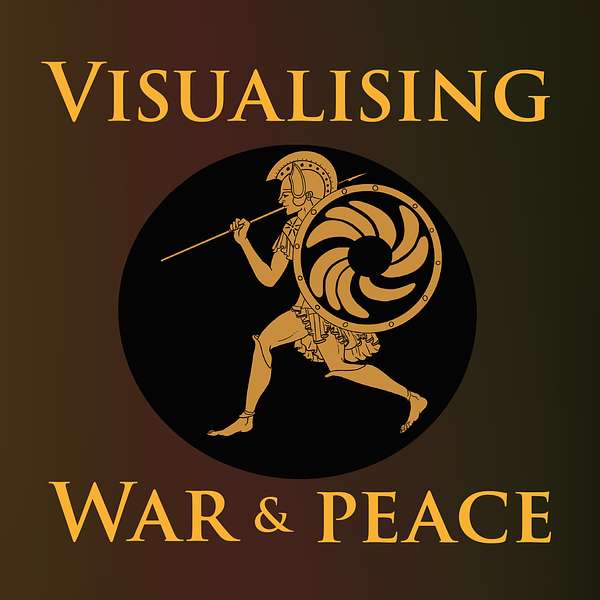
Visualising War and Peace
How do war stories work? And what do they do to us? Join University of St Andrews historian Alice König and colleagues as they explore how war and peace get presented in art, text, film and music. With the help of expert guests, they unpick conflict stories from all sorts of different periods and places. And they ask how the tales we tell and the pictures we paint of peace and war influence us as individuals and shape the societies we live in.
Visualising War and Peace
Curating Peace: the role of museums
In this episode, Alice interviews two guests about the 'peace knowledge' produced by different museums. Charlotte Houlahan joins us from Yorkshire, where she is principal curator at The Peace Museum in Saltaire, near Bradford. Alongside her, Lydia Cole, a Lecturer in International Relations at the University of Sussex, shares insights from her new research project, 'Curating Peace', which examines ways that exhibitions and museum collections shape public knowledge of peacemaking in the United Kingdom.
The Peace Museum in Saltaire is the UK’s only peace museum. Founded in 1994, it recently moved to new premises, which prompted its curators to think afresh about the kinds of peace stories it shares with the public. Charlotte gives listeners a flavour of some of the items in its collection, talks us through the design of its new exhibition space, and reflects on its mission to empower and inspire visitors through the human stories of individual peace activists past and present.
Lydia helps us to identify the different kinds of peace knowledge present in war-oriented museum spaces, such as London's Imperial War Museum. Discussing their WWI and WWII galleries, their Peace and Security section, and their 2017 temporary exhibition 'People Power', she discusses different approaches - some of which focus on top-down, institutional forms of peacebuilding, while others centre ordinary people and even take the curation of peace knowledge (and conflict histories) beyond the museum space.
The conversation ends with some important reflections on the challenges of talking about peace amid conflict, the benefits that might arise from the development of more peace-oriented museums, and the ripple effects beyond the museum space of sharing peace knowledge in the everyday.
We hope you enjoy the episode. For a version of our podcast with close captions, please use this link. For more information about individuals and their projects, please visit the University of St Andrews' Visualising War website and the Visualising Peace Project. You can access our own virtual Museum of Peace here.
Music composed by Jonathan Young
Sound mixing by Zofia Guertin